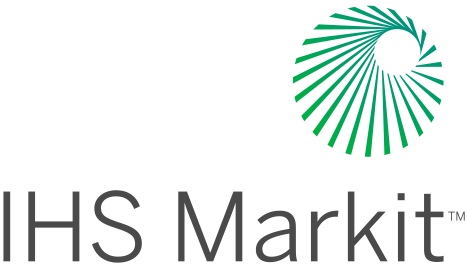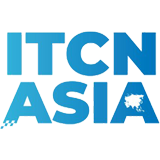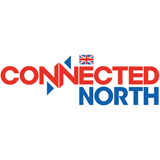|
The Internet of Everything needs a "fabric"
5/28/2015 |
|
|
Sam Lucero, Senior Principal Analyst, M2M and the Internet of Things
Machine-to-machine (M2M), the Internet of Things (IoT), and the even more expansive Internet of Everything (IoE) are concepts now in sharp focus for the technology industry. Internet connectivity has progressed rapidly from fixed locations to mobile users. Now, internet connectivity is extending to the physical world around us through a myriad of different sensors, devices, and equipment.
The transition to the IoE is still largely an ad hoc adaptation of existing technologies, however, rather than a "fit-for-purpose" framework. IHS believes that there is potential for the IoE to become a pervasive resource rather than a collection of point applications. For the IoE to reach this potential, though, there needs to be an IoE "fabric" that will require the following technology and market developments:
Connectivity needs to become simpler, especially for end-users, as well as more robust and capable. For example, a connectivity fabric should enable ultra-low latency services for mission-critical and industrial applications.
Connectivity technologies need more scalability - in terms of scaling up data rates for high-performance applications, such as video surveillance, in-vehicle infotainment, and mobile computing; scaling up the numbers of devices that can be supported on the network into the billions; as well as scaling down the power consumption for devices operating for years in the field on battery power.
The market needs to transition from point M2M applications to interconnected IoE capabilities.
Ultimately, an IoE fabric will be a set of technologies managed for the end-user as a service.
The remainder of this article will expand on the four points above and provide IHS Technology's view of an IoE fabric. While the article focuses on the expanding role of LTE, please keep in mind that short-range wireless (SRW) technologies also have an important role to play. The IoE represents a wide diversity of use cases and SRW technologies will be more optimal in some instances and serve to complement LTE.
Wi-Fi and Bluetooth, in particular, are expanding their capabilities in some of the same directions described below for LTE. In general, IHS believes that a pervasive IoE fabric will require the maturity, interoperability, and scalability of global wireless standards - such as LTE, Wi-Fi, and Bluetooth - rather than proprietary or niche (vertical-specific) technologies.
Simpler, but more capable
Simplifying connectivity means taking the burden of deploying communications infrastructure off of the developer. Cellular technology intrinsically does this as a managed service that is generally, and increasingly, reliable, secure, and pervasive. Of course, there will always be a role for increasingly fast wired broadband internet access to businesses and homes. There is also a role for local area networking (LAN) technologies of various sorts - wireless and wired - to extend internet connectivity throughout the local environment.
However, the IoE fabric opportunity for cellular technology comes when cellular technology does two things. First, it must increase the scope of its capabilities to address a wider array of use cases. Second, cellular technology must increase its ability to seamlessly interwork with SRW technologies so that service providers can offer heterogeneous connectivity services in which the connectivity services themselves are largely transparent to the developer and end user.
The mobile industry is evolving LTE with new Releases of the global 3GPP standard. LTE was initially introduced with Release 8, and its successor, LTE Advanced, was introduced in Release 10. These Releases to date have been primarily optimized for mobile broadband services targeting smartphones. This article focuses on new LTE Advanced features that are part of upcoming Releases 12 and 13, but will use the generic term "LTE" for brevity. These new developments are expanding LTE to address the IoE fabric opportunity, and include:
Convergence
Network aggregation: With Release 13, LTE will gain the ability to combine LTE and Wi-Fi connections for service delivery. The LTE network will control the Wi-Fi resources, providing optimized management and mobility, while the Wi-Fi network will add to the overall data throughput available via the LTE link.
Spectrum aggregation: Alternatively to aggregating LTE and Wi-Fi, LTE-U (Unlicensed) will enable LTE transmissions in 5 GHz unlicensed spectrum for LTE small cell deployments. LTE-U, in 3GPP referred to as Licensed Assisted Access (LAA), is being standardized as part of Release 13.
Extended coverage
Relays and multi-hop mesh networking: Successive LTE Releases will expand the device-to-device capabilities initiated with LTE Direct in Release 12. These include device-to-device, one-to-many, and device-to-network relay communication modes. With Release 14, LTE should support more demanding vehicle-to-vehicle (V2V) communications, such as "platooning". These direct communication modes will occur both in- and out-of-network coverage and increase availability of useful connectivity.
Enhanced coverage: Release 13 will also introduce LTE-M, a low power, low data rate technology targeted at sensors and other low resource machine-type communications (MTC). LTE-M is an evolution of LTE Category 1 (Cat-1) and LTE Category 0 (Cat-0). A key capability of LTE-M will be enhanced coverage techniques that enable LTE-M devices to communicate from challenging locations, such as basement-located smart meters, or sump pumps buried a short distance underground.
New service types
Ultra-Low Latency (LTE-ULL): While LTE inherently enables lower latency compared to 2G and 3G technologies, LTE-ULL is targeting end-to-end latency of about 1 ms, enabling cellular technology to address new classes of mission-critical applications, such as closed-loop industrial automation equipment control (not simply machine condition monitoring), automatic vehicle caravanning, and unmanned aerial vehicle (UAV) control.
Discovery: LTE will enable device-to-device proximal awareness superior to that of current solutions based on geo-fencing and Bluetooth Beacons. The benefits of LTE-based device and service discovery include: increased range, more robust privacy mechanisms, and more efficient battery utilization.
Broadcast: LTE Broadcast first came with Release 9 and will be extended in future Releases. LTE Broadcast makes more efficient use of spectrum by off-loading high-bandwidth (video) communications from unicast delivery. Future releases will provide additional benefits, such as: increased bandwidth, increased transmission range to 15 km, dynamic switching between unicast and broadcast, use of LTE-U unlicensed 5 GHz spectrum in small cell scenarios, and converged video services to both mobile and fixed screens.
Push to Talk: A relatively niche technology coming with Release 13 is Mission Critical Push To Talk (LTE-MCPTT). This will provide first responders with extremely robust device-to-device and one-to-many communications. Devices will be able to communicate both in and out of network coverage. Very importantly, though MCPTT may be a niche use case, LTE-MCPTT will leverage the wider LTE ecosystem of devices and technology.
The technologies described above increase the diversity of network and spectrum types available for cellular-connected applications. Equally important, they expand cellular use cases from the traditional "best-effort, hub-and-spoke" to a much higher level of QoS and wider range of connectivity topologies. These are essential ingredients to a pervasive connectivity fabric.
While this article has focused on the evolution cellular technology through successive LTE Release iterations, it is worth noting that Wi-Fi and Bluetooth are also gaining similar enhancements. For example, IEEE 802.11p (DSRC) is providing a current means of enabling V2V connectivity. Wi-Fi Aware will supplement LTE-based proximal awareness services. Bluetooth Beacons add a similar proximal awareness capacity for Bluetooth. IEEE 802.11ad will increase Wi-Fi's bandwidth to optimize distribution of video content. Finally, Wi-Fi Direct and Bluetooth Smart will enable new device-to-device and mesh networking topologies, respectively.
Although LTE is expanding to a wider range of use cases and scenarios, the relationship between LTE and SRW technologies is not always zero-sum. Wi-Fi and Bluetooth can help supplement and complement cellular technology in enabling an IoE fabric.
Scaled up, and scaled down
In addition to the new capabilities described above, LTE is evolving to meet the needs of M2M and IoT applications specifically. LTE-M (Machine-type communications) describes enhancements that enable LTE both to support a much greater volume of connections per base station, as well as to support applications that need much lower power consumption and costs. In effect, LTE-M is scaling up the volume of possible connections, and scaling down power consumption and costs. Both of these attributes are important for LTE to become a practical replacement for current, mostly SRW-based, machine connectivity technologies.
On the infrastructure side of the connection, LTE Release 11 brings the first effort to effectively handle the large scale of connections inherent in the IoT by providing overload control. Overload control provides the ability to use Extended Access Barring (EAB) to restrict access to delay-tolerant devices when too many devices are trying to connect to the network. This is analogous to metered on-ramps to the highway for vehicles.
On the device, or User Equipment (UE), side of the connection, LTE-M will bring a number of important enhancements. LTE Release 12 provides a Power Save Mode (PSM) for reduction in power consumption for some use cases. Release 13 should dramatically enhance the PSM functionality, with a target of enabling use cases where devices are powered for 5 - 10 years on two AA batteries. The PSM feature is focused on uses cases with device-originated data (e.g. smart metering).
Release 13, specifically, includes proposals for features such as longer sleep cycles (useful in device-terminated applications) and more efficient signaling for low-to-zero mobility applications.
In addition to reduced power consumption, reduced device modem costs are a key goal of Cat-0 and LTE-M. By reducing bandwidth and data rate capabilities, Cat-0 and LTE-M sees to reduce modem complexity, which is a key requirement for reducing costs. Cat-0 (Release 12) makes an initial move down this path. Cat-0 reduces the maximum download rate to 1 Mbps by restricting the maximum transport block size. In addition, Cat-0 provides the option of reducing the receive RF chains from the 3-4 in Release 10 down to one. Furthermore, Cat-0 introduces an optional half-duplex transmission mode. By making these modification, IHS estimates that Cat-0 module costs can be brought down to current 3G module costs, or about mid-$20s per device.
With Release 13 and LTE-M, costs should be reduced even more. LTE-M data rates will still be up to 1 Mbps, but only 1.4 MHz bands will supported. LTE-M will retain as options a single antenna option and half-duplex transmission mode. IHS anticipates that LTE-M modules will be offered at price points equivalent to 2G modules, or about $7 per device in 2017.
The reductions in power consumption and cost described above are substantial, and certainly make LTE a practical replacement for current 2G and 3G modems used in M2M and IoT applications, while also offering enhanced feature improvements over 2G/3G, such as the increased coverage and reduced power consumption discussed previously. The cellular industry is also investigating scaling down even further in power consumption and cost savings, however. For example, a recent 3GPP initiative is proposing a new "clean slate" design approach to a RAN standard for the IoT that would also be part of Release 13.
The initiative should result in a globally standardized, more reliable (based on licensed spectrum) version of the various ultra-narrowband (UNB), low power wide area networking (LPWAN) technologies currently in the market, such as LoRaWAN, SIGFOX, and Weightless-N. Essentially it will limit the data rate to hundreds of bits per second while consuming even less power and offering further cost reductions compared to LTE-M. Nevertheless, it should co-exist as much as possible with deployed LTE RAN infrastructure to leverage the mobile industries on-going capital investments.
The 3GPP is evaluating several proposed technologies now to selec t one to be the new standard. IHS believes that 3GPP will selec t one of these technologies sometime in Q3 2015, though it is unknown when mobile operators would commercially deploy the technology.
In parallel to the LTE developments described above, both Wi-Fi and Bluetooth are gaining new capabilities that make them increasingly appropriate for IoE applications. For example, Wi-Fi will see the introduction of IEEE 802.11ah in 2016. The 802.11ah standard is targeted toward IoT sensor connectivity and uses sub-GHz frequency bands and device-to-device relay for longer range, local area device grouping to minimize contention interference to the access point when the access point is supporting a large number of devices, and power saving features to extend device battery life.
Similarly, Bluetooth Smart targets personal area networking (PAN) IoE applications, in particular devices connecting to a user's smartphone, such as a fitness tracker. Bluetooth Smart reduces battery consumption to enable coin-cell battery-powered devices to operate for up to a year before battery replacement. Likewise, Bluetooth Smart increases the potential transmission range from the standard Classic Bluetooth range of 30 feet to 200 feet for use cases, such as connected home devices, where the device is outside the range of an individual's PAN.
M2M to IoE
A key role for an IoE fabric is to enable a transition from standalone point M2M applications to interconnected IoT and IoE applications. This will be accomplished through common and standard service layer middleware frameworks. Traditionally, end-users and corporate adopters deploy their M2M application as a silo; it is essentially an "intranet of Things" with all functionality self-contained in the deployed application. An "Intranet of Things" application is typically more limited in scope and functionality because it's entirely dependent on the end-user or corporate adopter to plan, deploy and manage.
A true IoT or IoE application can make use of the capabilities and functionality of a wide range of devices, data sources, and applications deployed by a heterogeneous set of actors. For example, a transit application might provide a commuter with a bus schedule updated in real-time. This application could make use of a "mash up" of an Open Government database that collects actual bus locations and status via cellular-based telematics links, traffic conditions via social media posts from Twitter or Waze, and weather data from The Weather Company. The key here is the rich set of data used that would be very difficult in aggregate for any one company or application developer to compile.
M2M application platform (MAP) vendors like PTC and IoT platform (IoTP) vendors like Xively are already starting to enable this kind of interconnectivity. Standardized service layers will make such interconnectivity much more pervasive, however, and encourage "network effect" benefits - the more devices, data sources, and applications connected the more valuable interconnectivity will be for everyone. Two key examples of standardized service layers in the market are OneM2M and AllJoyn.
OneM2M is a collaboration of seven regional standards development organizations (ARIB, ATIS, CCSA, ETSI, TIA, TTA and TTC), as well as private enterprise and leading industry consortia. OneM2M is focused on wide area interconnectivity between devices, data sources, and applications. At a high level, it provides for exactly the kind of functionality described above in the transit example. OM2M 0.8, published in February 2015, is an implementation of the ETSI SmartM2M specification. OM2M 1.0, with a wider set of industry inputs, will be published in the second half of 2015. The Eclipse Foundation is providing open-source middleware based on the standard.
AllJoyn is an open-source software framework managed by the AllSeen Alliance, an industry consortium that is part of the Linux Foundation, with over 100 member companies comprising consumer electronics manufacturers, home appliance makers, automotive companies, Internet of Things cloud providers, enterprise technology companies, semiconductor manufacturers, service providers, retailers, and software developers. AllJoyn enables devices to discover and securely connect directly to other nearby devices, irrespective of transport layer or underlying operating system. Transport layer examples for AllJoyn are Wi-Fi, Ethernet, or powerline.
Standard service layers, such as OneM2M and AllJoyn, will be instrumental in breaking down functional silos between devices, data sources, and applications. Innovative developers will have a much greater range of capabilities to mash together in new, interesting, and useful ways and will not be limited only to the infrastructure, data sources, and applications that they themselves deploy and manage.
Fabric-as-a-Service
The key point IHS makes in this article is that, ultimately, the IoE fabric described above will be provided to developers, end-users, and corporate adopters as a service. It will not be enough for cellular technology to expand its functionality with successive LTE Releases. It will not be enough for LTE to become "right-sized" for a tens of billions-plus devices IoT world. It will not even be enough for standard service layers to provide the capacity for large-scale interconnections. Ultimately, all of these features must be abstracted away from the final links in the value chain and supplied as a transparent package of functionality and capabilities.
The IoE Fabric-as-a-Service (FaaS) model is important because even with expanded capabilities it will still be challenging and expensive for developers to create IoE applications. Even as costs decline, IHS still hears from the IoE ecosystem how complex, time-consuming, and, consequently, risky, IoE application development can be, not only from a pure technical development perspective, but also in areas such as organizational process and change management.
In an IoE FaaS model, a service provider offers all of the service functionality that is not the core competency or differentiation of the developer. This could include functionality not yet described in this article, such as cloud hosting, data analytics, or managed cybersecurity services. As a practical matter, this could also include business consulting and system integration services on a project-by-project basis. One very key function would be helping device, data source, and application owners to monetize their assets by brokering interconnectivity with developers who would benefit from access (such as the transit app developer in the example cited previously). Service providers could thereby greatly reduce complexity, time-to-market, and risk for IoE developers by enabling the developers to spend their time and resources focused on those areas that differentiated the developer in the market, rather than having to "reinvent the wheel" creating fundamental building blocks common to many IoE applications.
While mobile operators are in a prime position to serve as IoE FaaS providers, they are not the only possible players. MVNOs, whether they are re-selling mobile operator SIMs or interconnecting with mobile operator core infrastructure, are also in a strong position, especially in serving smaller developers that may not have the scale to attract mobile operator interest. It is also clear that M2M module vendors, such as Sierra Wireless and Telit Communications, are interested in developing connectivity businesses and could be viable IoE FaaS providers, especially with their ability to deeply integrate services with their module offerings. Finally, it is possible that MAP and IoTP vendors, along with electronics distributors and system integrators, could play a positive role in providing many of the IoE fabric building blocks as a service to their customers.
Timeline and conclusion
Much of this article has focused on technical developments in the core LTE standard with upcoming Releases. Consequently, below is a summary of IHS Technology's understanding of the introduction timeline for these LTE Releases for both specification and commercialization:
Release 12: Final specification frozen in March 2015, commercialization expected in 2016.
Release 13: Final specification freeze expected in March 2016, commercialization expected in 2017 - 2018.
It will take significant ecosystem collaboration to fully realize an IoE fabric, but the availability of such a fabric should unleash tremendous innovation by third-party IoE application developers, and the value of this work will be immense. |
|
|
|
|
|






